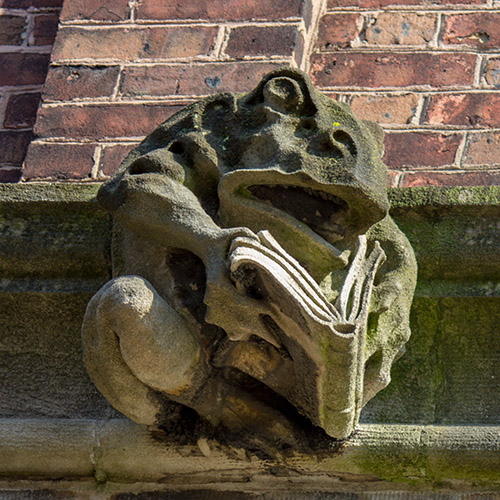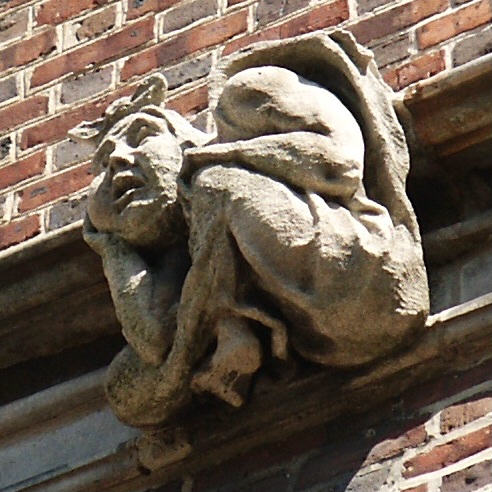UPenn Gargoyles
Read about these weird architectural embellishments here, with more pix.
And also here.


And also here.
In the 1890s and the first couple decades of the twentieth century, Penn engaged Philadelphia architects Cope and Stewardson to design several University buildings. With their design for the Quadrangle, whose first section opened in 1896, Cope and Stewardson emulated several vintage eras of English architecture in a style that became known as Collegiate Gothic. In a delightful homage to Elizabethan architecture, they incorporated several dozen bosses into their design. They worked with sculptors Henry Plasschaert and John Joseph Borie (a Penn architecture alumnus) and stone carvers Edmund Wright, Edward Maene and assistants to turn these uncut stones into sculpted figures. Cope and Stewardson approved elevation views and clay models of each proposed boss, which was then carved over a period of three to four days from a fourteen-inch square piece of Indiana limestone that had been incorporated into the Quadrangle.
Mr. Plasschaert and his carvers kept the mood of these bosses whimsical. Parodic figures are abundant, such as a grotesque animal biting the corner of a block of stone, or an architect dressed in an elf costume carrying a basket of fruit. A variety of mythical creatures and bizarre monsters are on display, as is the occasional reference to academic activity, like the creatures brandishing tragedy and comedy masks atop the Mask and Wig clubhouse, or a monkey clutching a scroll labeled “diploma.”


Comments
I wonder if the CCP ear marked money from the "donated" 60 millions creating the Biden Foundation, where the top secret papers were hidden, for a pair of new gargoyles over the doorway representing the coupcoup?
Posted by ResortDog on 06/07/23 at 09:34 AM
(It´s the news that´s supposed to be crazy, not the commentators)
Posted by F.U.D in Stockholm on 06/07/23 at 10:39 AM
I have no comment on this, except one: I thoroughly approve.
Posted by Richard Bos on 06/10/23 at 09:18 AM
Maybe we'll never know. Biden said "Just follow the money" the other day, because it's obvious he thinks we won't be able to. Also there's some remark about enough shell companies have been used such it will take 10 years to work thru them all.
Posted by Virtual in Carnate on 06/11/23 at 04:59 PM
Commenting is not available in this channel entry.

Category: Architecture | Regionalism | Nineteenth Century | Twentieth Century